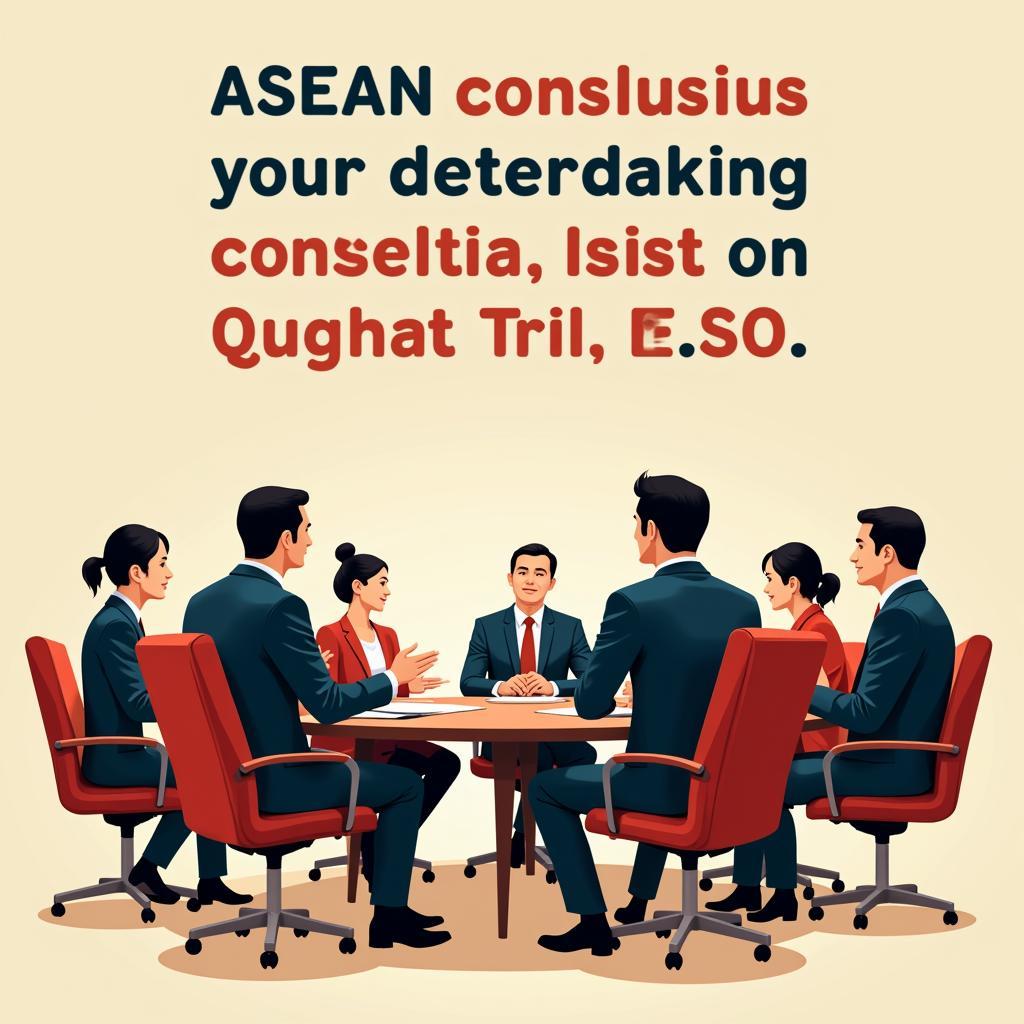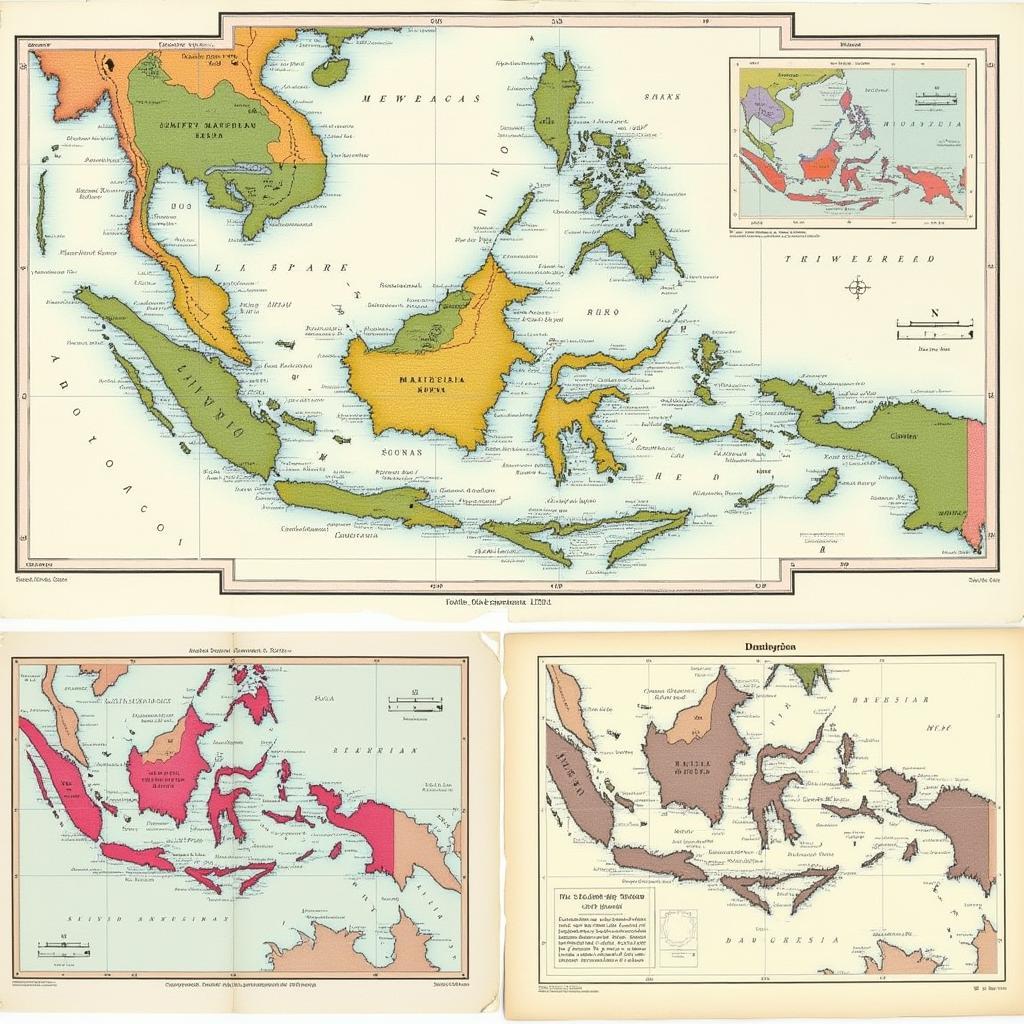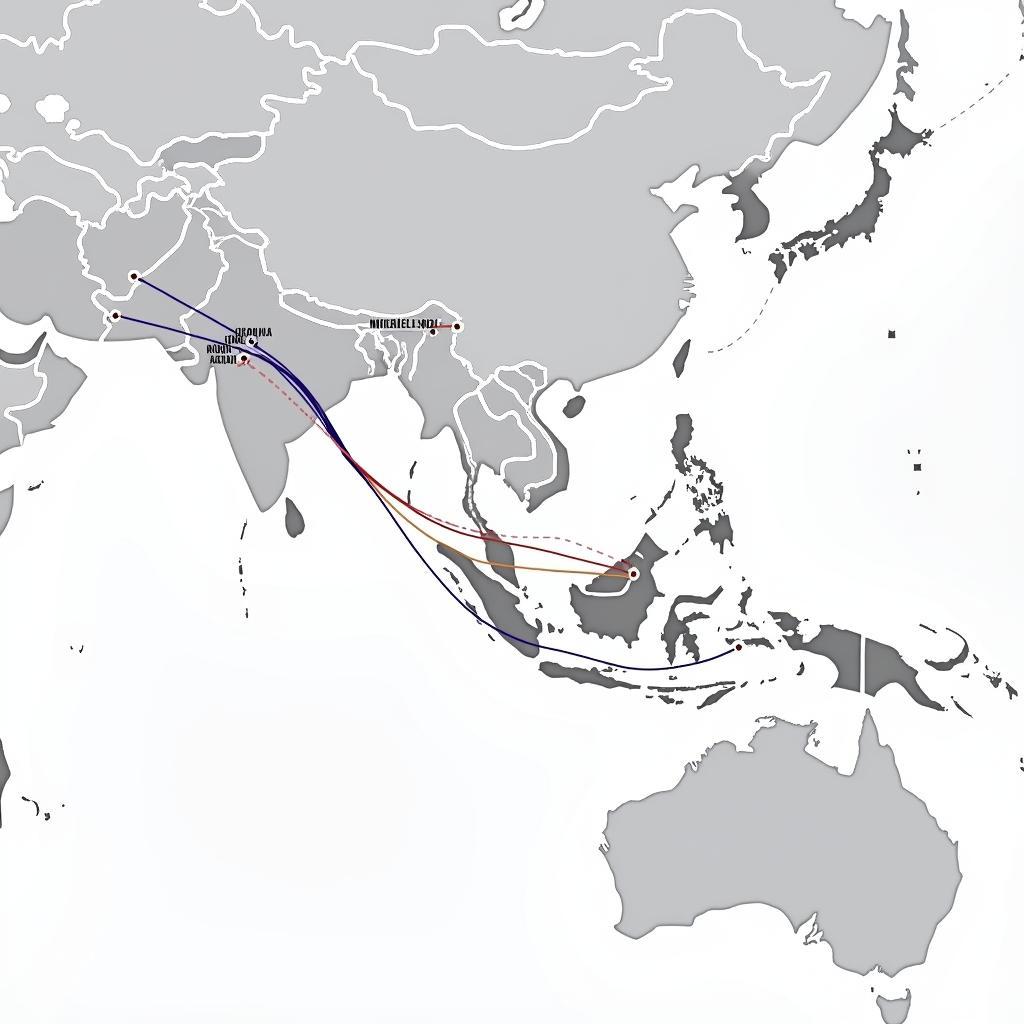The asean model de vries 1998 provides a valuable framework for understanding the unique dynamics of regional cooperation in Southeast Asia. This article delves into the core principles of De Vries’ model, exploring its relevance to the ASEAN’s evolution and its implications for future regional integration. We will examine how this model sheds light on the ASEAN’s approach to political, economic, and security cooperation, while also considering its limitations and criticisms.
De Vries’ Framework: A Closer Look at the ASEAN Model (1998)
De Vries’ 1998 model emphasizes the ASEAN’s preference for informal, consensus-based decision-making processes, prioritizing national sovereignty and non-interference in internal affairs. This approach, often described as the “ASEAN Way,” contrasts sharply with the more formalized and legally binding structures found in other regional organizations. De Vries argues that this distinctive approach stems from the diverse political systems, historical experiences, and cultural values of the ASEAN member states. He highlights the importance of “process” over “product,” suggesting that the ASEAN often prioritizes building trust and fostering relationships over achieving immediate, concrete outcomes.
One key aspect of the ASEAN model de vries 1998 is its emphasis on informality. This allows for greater flexibility and adaptability, accommodating the diverse interests and priorities of member states. Rather than relying on rigid rules and regulations, the ASEAN often opts for informal consultations and negotiations, fostering a sense of shared ownership and commitment.
Another crucial element is the principle of non-interference. This reflects the deep-seated respect for national sovereignty within the ASEAN, allowing member states to manage their internal affairs without external pressure. While this principle has been praised for maintaining regional stability, it has also been criticized for hindering the ASEAN’s ability to address critical human rights and democracy issues within its member states.
The “ASEAN Way”: Consensus-Building and National Sovereignty
The “ASEAN Way,” as highlighted by De Vries, emphasizes consensus-building as a cornerstone of regional cooperation. This approach requires patience and compromise, often leading to decisions that reflect the lowest common denominator among member states. While this can sometimes slow down the pace of integration, it also ensures that all members feel heard and respected, fostering a sense of unity and shared purpose.
De Vries’ 1998 analysis also sheds light on the challenges faced by the ASEAN in balancing national interests with regional goals. The diverse economic and political landscapes of member states often create tensions and competing priorities. De Vries suggests that the ASEAN’s ability to navigate these complexities and maintain regional stability is a testament to the strength of its informal, consensus-based approach.
 ASEAN Way: Representatives in a Discussion
ASEAN Way: Representatives in a Discussion
Criticisms and Limitations of the ASEAN Model
While De Vries’ model provides valuable insights into the ASEAN’s unique characteristics, it has also faced criticisms. Some argue that the emphasis on informality and non-interference can lead to a lack of accountability and effectiveness, particularly in addressing pressing regional issues. Others contend that the model overlooks the growing influence of external powers within the ASEAN, such as China and the United States.
“The ASEAN’s strength lies in its ability to adapt and evolve,” notes Dr. Anya Sharma, a Southeast Asia specialist at the Institute for Regional Studies. “While De Vries’ model provides a useful framework, it’s crucial to recognize that the ASEAN is not static. It’s constantly adapting to new challenges and opportunities.”
The ASEAN Model’s Relevance in the 21st Century
Despite its limitations, the asean model de vries 1998 continues to be relevant in understanding the organization’s approach to regional cooperation. As the ASEAN navigates an increasingly complex geopolitical landscape, its emphasis on consensus-building and non-interference remains a defining feature.
 Future of the ASEAN Model: A Diverse Group Looking Forward
Future of the ASEAN Model: A Diverse Group Looking Forward
“The ASEAN’s focus on fostering trust and building relationships is more important than ever in today’s interconnected world,” adds Professor Michael Tan, an expert on ASEAN affairs at the National University. “This approach allows the organization to address complex challenges collaboratively, while respecting the diverse perspectives of its member states.”
In conclusion, the asean model de vries 1998 provides a valuable framework for understanding the unique dynamics of regional cooperation in Southeast Asia. While the model has its limitations, it continues to be relevant in understanding the ASEAN’s approach to navigating the complexities of regional integration in the 21st century.
FAQ
- What is the core principle of the ASEAN Way? Consensus-building and non-interference.
- What are the limitations of the ASEAN model? Lack of accountability and potential ineffectiveness in addressing critical issues.
- Why is informality important in the ASEAN model? It allows for flexibility and adaptability amongst diverse members.
- How does the ASEAN model address national sovereignty? By prioritizing non-interference in internal affairs.
- What is the significance of De Vries’ 1998 model? It provides a framework for understanding ASEAN’s unique approach to regional cooperation.
- How does the ASEAN balance national and regional interests? Through consensus-building and compromise.
- Is the ASEAN model still relevant today? Yes, its emphasis on cooperation and non-interference remains crucial in the current geopolitical landscape.
Need support? Contact us 24/7: Phone: 0369020373, Email: [email protected] or visit us at: Thon Ngoc Lien, Hiep Hoa, Bac Giang, Vietnam.

